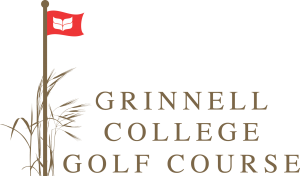Jason Koester CGCS Receives Professional Certification

Lawrence, Kan. (April 4, 2025) – Jason Koester, certified golf course superintendent (CGCS) at Grinnell (Iowa) College Golf Course, has completed the renewal process for maintaining his elite status with the Golf Course Superintendents Association of America (GCSAA). Koester has been at Grinnell since 2008.
A 25-year GCSAA member, he initially achieved his certification in 2005. Only about 900 golf course superintendents worldwide currently hold top-level status as a certified golf course superintendent.
“This program requires the highest set of competencies in golf course management through testing and practical application, and we are proud of the association’s Class A members who have advanced and continue to hold the highest level of professional recognition as a certified golf course superintendent,” said Rhett Evans, GCSAA chief executive officer. “We congratulate Jason on retaining the CGCS designation.”
To become a CGCS, a candidate must have at least three years’ experience as a golf course superintendent, met all GCSAA Class A member requirements, passed the proctored online exam covering agronomy, business and environmental management; completed the communication and leadership requirement; and undergone a successful attesting of the golf course.
“Being a certified golf course superintendent shows dedication to our great profession, commitment to continued learning and hard work,” Koester said. “CGCS is more than four letters behind your name. It demonstrates setting a goal, accomplishing it, and maintaining a high level of professionalism in the golf course industry and turfgrass maintenance.”
In order to maintain certified status, superintendents are required to complete a renewal process every five years. Koester has completed these renewal cycles since initially becoming certified.
To learn more about the CGCS program, visit gcsaa.org/CGCS.
About GCSAA
The Golf Course Superintendents Association of America (GCSAA) is a leading golf organization in the United States. Its focus is on golf course management, and since 1926 GCSAA has been the top professional association for the men and women who manage golf courses in the U.S. and worldwide. From its headquarters in Lawrence, Kan., the association provides education, information and representation to 20,000 members in more than 78 countries. The association’s mission is to serve its members, advance their profession and improve communities through the enjoyment, growth and vitality of the game of golf. Visit GCSAA at www.gcsaa.org or find us on Facebook or Twitter. Visit our industry-leading magazine at GCMonline.com.
The GCSAA Foundation is the philanthropic organization of the GCSAA. Its mission is to secure funding and support to strengthen advocacy, education, and research that advances the work of golf course management professionals. Visit the Foundation at www.gcsaa.org/foundation.

